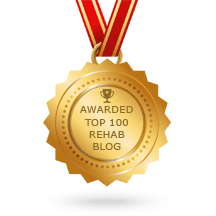 Have you ever suspected that your addictions are actually attempts to “numb out” from an underlying emotional pain? If so, then you already understand a great deal about the root causes of addiction and have a sense of what dual diagnosis is. Whether or not you are even consciously aware of the emotional root causes, the slightest reminder or trigger can lead you back into that pattern of self-medicating. So you continue even though your drug of choice is causing collateral damage.
Have you ever suspected that your addictions are actually attempts to “numb out” from an underlying emotional pain? If so, then you already understand a great deal about the root causes of addiction and have a sense of what dual diagnosis is. Whether or not you are even consciously aware of the emotional root causes, the slightest reminder or trigger can lead you back into that pattern of self-medicating. So you continue even though your drug of choice is causing collateral damage.
What is Dual Diagnosis?
Dual diagnosis is the term used to describe two disorders occurring in one person at the same time, one of which is addiction.
For example, an individual who abuses alcohol and is bipolar has a dual diagnosis, as does someone with an eating disorder and depression.
When there is a mental health issue running alongside addiction issue, that represents a dual diagnosis.
Dual Diagnosis Definition
According to NAMI (National Alliance on Mental Illness), dual diagnosis is when someone experiences a mental illness and a substance abuse problem simultaneously.
Dual diagnosis is a very broad category. It can range from someone developing mild depression because of binge drinking, to someone’s symptoms of bipolar disorder becoming more severe when that person abuses heroin during periods of mania. Either substance abuse or mental illness can develop first.
A person with a mental health condition may turn to drugs and alcohol as a form of self-medication to improve the troubling mental health symptoms they experience.
Research shows though that drugs and alcohol only make the symptoms of mental health conditions worse.
It’s worth noting that the addiction doesn’t have to involve substances. We can abuse other things like food, sex, gambling, video games … even work. The common attribute is that the behavior is being used compulsively to numb out from a deeper emotional issue. We now know that the brain’s chemical response to compulsive sexual and food inputs is very similar to that of cocaine.
To clarify, having two mental health disorders such as anxiety and depression does not meet the dual diagnosis definition.
In order to have a dual diagnosis, one must have a mental and emotional health issue along with an addiction.
Based on our experience, the vast majority (if not virtually all) people with an addiction have a dual diagnosis condition.
The prevalence of mental health issues in addiction
Though popular culture tends to portray alcoholism and substance abuse as isolated issues, the reality is very different. In real life, addiction generally doesn't appear for no reason. Often, it arises because of an unaddressed mental health issue.
Mental health conditions are more prevalent than people think. As DrugAbuse.com’s article Mental Health and Drug Abuse notes, “According to the Journal of American Medical Association (JAMA), 50% of the people who have a severe mental condition also have a substance abuse problem … [and] 37% of alcoholics have a mental illness, as do 53% of drug addicts.”
In fact, most addictions are actually dual diagnosis because they are related to an underlying mental or emotional issue. In order to facilitate healing, the person dealing with addiction likely needs professional help to confront those deeper issues.
Dual diagnosis gets to the root causes of addiction
When individuals don’t addressing the core issues that drive addiction, they stay stuck in dysfunctional habit loops.
The pattern plays out like this:
- A person has an unresolved issue that they may or may not be aware of, and then they use alcohol or drugs in order to feel better.
- However, the underlying emotional disturbance ensures that before long, they will feel bad again.
- So they use again, and a habit develops. At that point the individual may try to stop, but it’s difficult. Any number of triggers can send them right back into using.
Further, they may struggle with chemical dependency and withdrawal. Perhaps they go through a chemical detox to break through physical withdrawal, only to face an emotional trigger and relapse soon thereafter.
Their recovery won’t be complete until they work to heal the emotional issues that led to the addiction. This is how dual diagnosis reveals itself in addiction treatment.
That’s not to say that facing such issues is easy … far from it!
As humans, we tend to try and outrun discomfort rather than facing up to it. Instead of allowing ourselves to feel “off-limits” emotions such as anger and sadness, we numb out.
We may do this with alcohol and drugs, or with more subtle and socially acceptable behaviors such as binge shopping or overwork.
Either way, the drive toward pain avoidance is the same. Inner anguish fuels a drive to escape, which then leads to addiction.
Why acting out don’t work
When people consume drugs or alcohol, their unexpressed, unprocessed inner pain doesn’t go away. Sometimes they feel a welcome sense of relief and freedom, but it’s fleeting.
Then as the effects of the alcohol or drugs wear off, the original discomfort multiplies. Now there’s shame and self-judgment surrounding the addiction and making the situation worse.
That’s one reason why attempting to push and shame people into making positive changes doesn’t work - it only adds to their suffering.
Feeling the pain and finding peace
People who abuse alcohol and drugs are just like the rest of us in that they want to avoid facing their inner tangles of grief and anger and fear. But the avoidance behaviors don’t bring the relief they seek. Instead, the pain persists until it is addressed.
As John Green wrote in his bestselling novel The Fault In Our Stars: “That’s the thing about pain. It demands to be felt.”
Once a person allows themselves to feel pain (and also understand and process it), they are often surprised to discover that it passes away fairly quickly, and that they feel stronger for it.
Treating Dual Diagnosis to make rehab more successful
Traditional 12 Step rehabs don’t adequately treat dual diagnosis and the underlying causes of addiction. Sometimes people get counseling to deal with trauma or emotional disorders, but the norm is that these conditions are treated separately rather than holistically.
As a result, many relapse or only experience temporary periods of sobriety. Indeed, many studies have reported 12 Step program success rates to be as low as 5%.
When individuals dealing with addiction dig into the interrelationship between their root causes and their addictive behaviors, they can heal both and transform their lives. Through this approach, The Clearing has achieved an 80% success rate with its participants (self reported, one year post graduation).
As the Principles of Spiritual Psychology remind us, unresolved issues are not bad. Rather, they are opportunities for growth. And when a person can stop running and sit with the emotions they’ve been avoiding, they discover a greater capacity for peace within themselves.
We offer a residential rehab and recovery program specializing in dual diagnosis treatment. What is dual diagnosis to us? It’s not a label that condemns someone to a life of futile struggle against addiction. Rather, it’s an invitation to address the underlying core issues of those behaviors and effect lasting positive change.
Continued Reading...
To learn more about Dual Diagnosis, download our free eBook:
Download Dual Diagnosis Free EBook
Or contact us. We're here to help.



